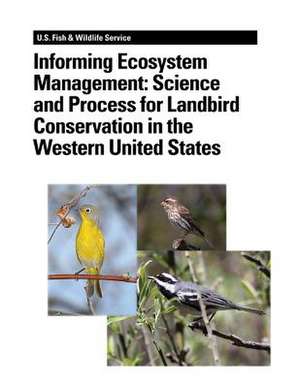Informing Ecosystem Management
Autor Stephens, Jaime L., Kimberly Kreitinger, Ralph, C. Johnen Limba Engleză Paperback
Preț: 109.19 lei
Nou
Puncte Express: 164
Preț estimativ în valută:
20.89€ • 21.87$ • 17.29£
20.89€ • 21.87$ • 17.29£
Carte disponibilă
Livrare economică 15-29 martie
Preluare comenzi: 021 569.72.76
Specificații
ISBN-13: 9781479141319
ISBN-10: 1479141313
Pagini: 70
Dimensiuni: 216 x 280 x 4 mm
Greutate: 0.19 kg
Editura: CREATESPACE
ISBN-10: 1479141313
Pagini: 70
Dimensiuni: 216 x 280 x 4 mm
Greutate: 0.19 kg
Editura: CREATESPACE
